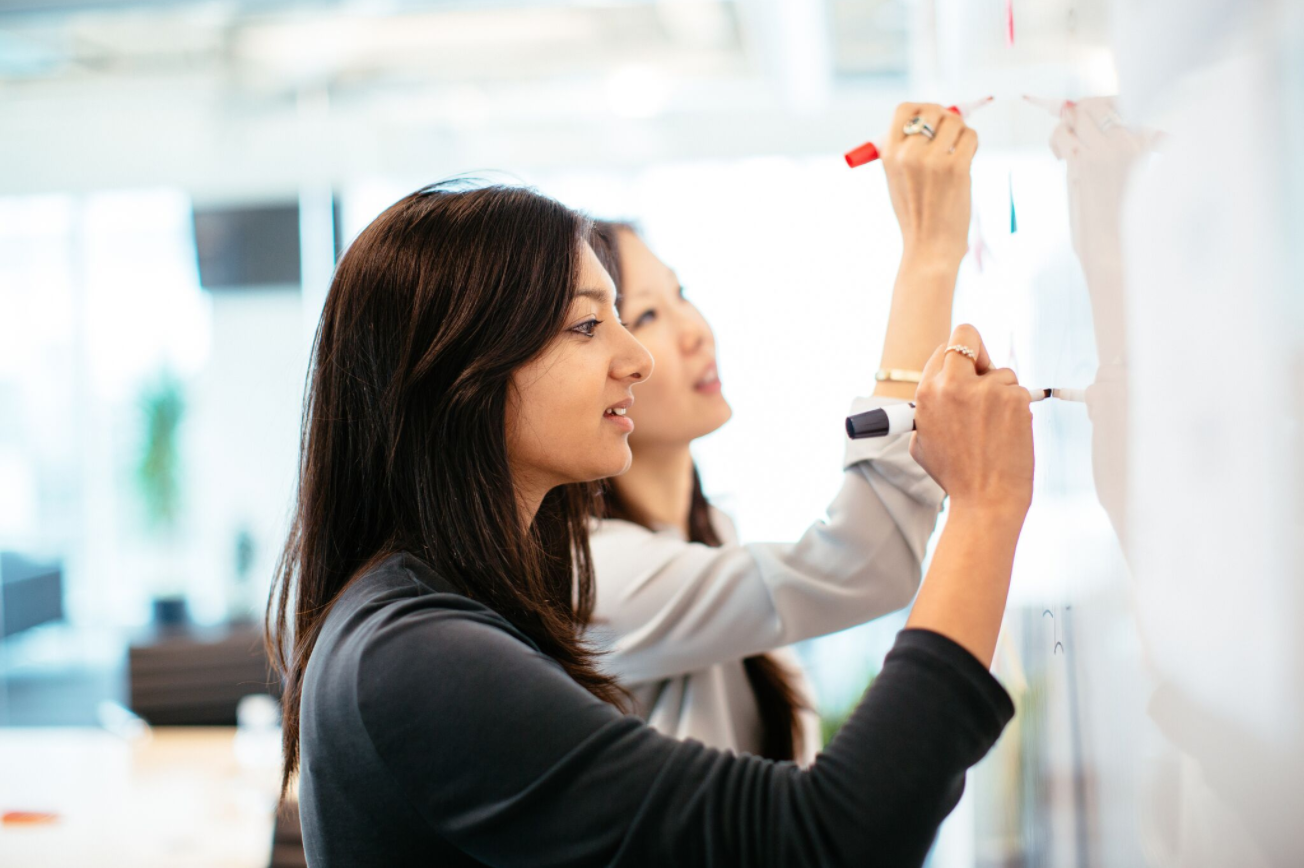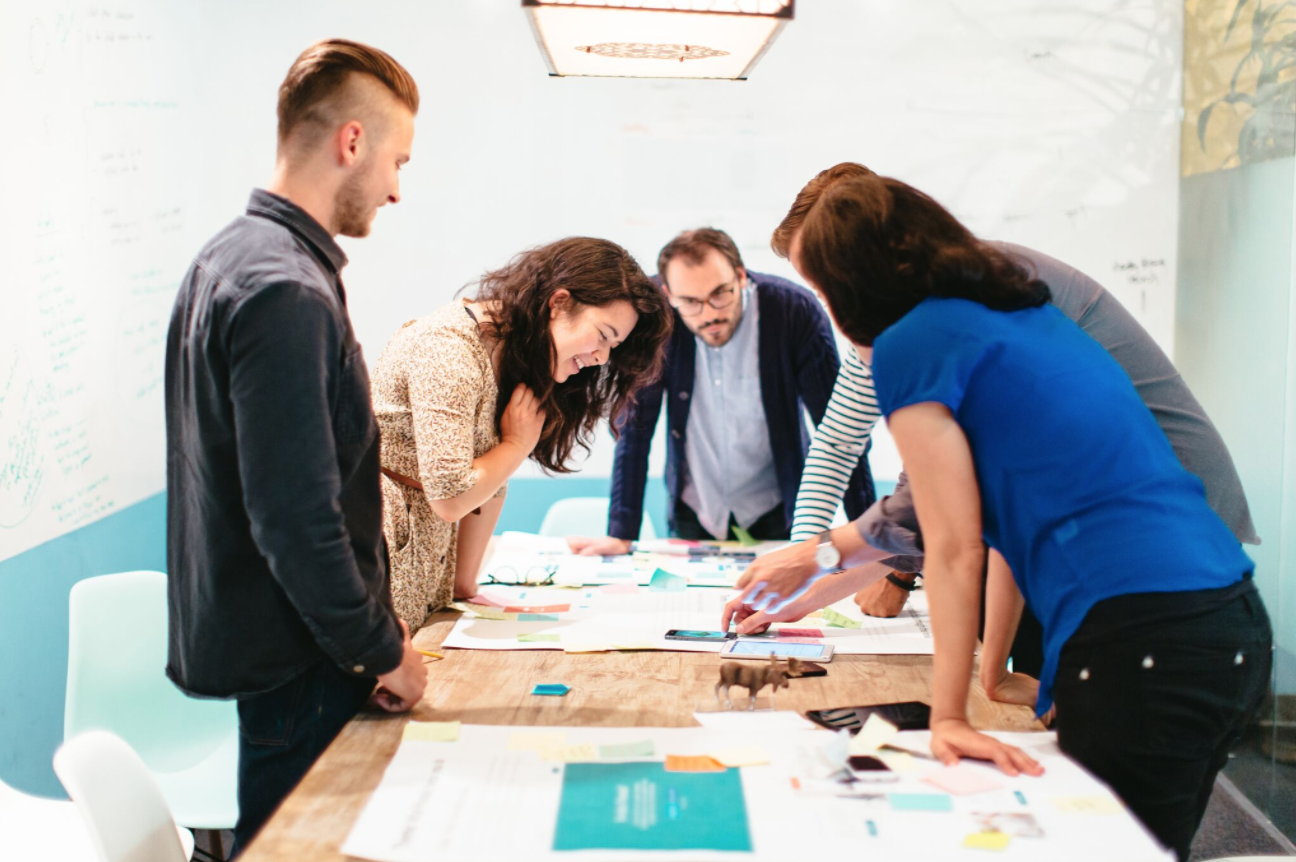Getting to Yes: Achieving Alignment in the Design Process
This is the third article in our four-part series on design leadership. To stay up to date on the full series and other Designer Fund news, join our email newsletter.
Design can be messy and unpredictable and the design process opaque, posing unique challenges for design managers as they guide their teams from kick-off to the completion of a project. A lack of alignment can lead to unnecessary frustration and lost time as the team moves toward achieving the broader goals and objectives.
The design managers we spoke to from Asana, Clover Health, and Dropbox achieved alignment at their firms through collaboration, communication, and coordination between design teams and product managers, department heads, and the executive team. Across the board, they underscored the need for openness and transparency, and for designers to make their voices heard throughout the process. “The best outcomes don’t come from shutting the door and working away on your own and doing a big reveal at the end,” Amanda Linden, Head of Product Design at Asana, told us.
The best outcomes don’t come from shutting the door and working away on your own and doing a big reveal at the end.
Each manager was responsible for designing their own “path to yes” at companies that varied in size, structure, business culture, and the role design plays in developing products and services. In every case, design managers created a specific structure and process to reach alignment through a transparent design process, stakeholder engagement, storytelling, and working closely with product managers. They also relied on user research as a foundation for their work. The solutions, strategies, and best practices that follow will help you design a unique “path to yes” for your company.

Design for Transparency
Teamwork and continual information sharing from the start of a project through completion will keep the design process flowing and ensure that all participants are working to timelines, understand deliverables, and can adapt to changes along the way as they make progress toward the goal. This happens at design meetings, brainstorming sessions, design sprints, and critiques held at regular intervals. At the start of every project, Anisha Jain, Design Manager at Dropbox, circulates a kick-off document using a template she devised that outlines the design approach and core user problems, and states the design goals and challenges. This helps facilitates a more structured and intentional discussion between designers, engineers and data analysts, she says. It also helps designers out of “reactive mode” by clearly defining the goals, approach, and core user problems.
For a recent product experience redesign at Asana, Linden began by defining the expectations for the project with her team, including the metrics they wanted to track to evaluate users’ first visit on the site. Once there was a shared vision on these metrics, she says, the designers were able to see the “different ideas on the table and what the impact might be.” Linden also uses frequent design critiques to elicit unvarnished feedback and empower teams to ask each other, “Do you think your work is good enough?”

Engage All Stakeholders
In many ways, the success of a design project within an organization depends on sharing the design process with stakeholders across company sectors. “Everybody likes to feel like a designer and make an underlying contribution to what is being created,” Linden says. Outreach should begin early in the design process, she suggests, instead of after a decision is made. Early engagement means teams can see the rough ideas that designers are iterating on and add their own as work continues.
That was important for a product Asana is launching in November for web and mobile applications. This complicated design task involved web and mobile teams working separately but launching the feature in tandem, which required bringing stakeholders together around a shared goal and approach. Establishing this type of inclusivity and close working relationships between stakeholders helps instill pride in what everyone achieves, and also reduces friction between departments, Linden says.
Stakeholder engagement begins at the design kick off with product managers, engineers, designers, and data scientists taking part.
At Clover Health, a health care and health insurance company, stakeholder engagement begins at the design kick-off with product managers, engineers, designers, and data scientists taking part. As a project evolves, there are key meetings every two weeks with stakeholders, allowing designers to brief teams on their work as it develops and to flag upcoming deadlines. Stacy La, Head of Design at Clover Health, says this type of schedule lets all teams know what to expect and “gives designers breathing room between reviews to work.” Design leaders need to manage stakeholder interactions. And when a project is important and interesting enough to a particular stakeholder, La says, design managers should provide them with “as much visibility as possible and make sure they are super well-aligned on goals and scope.”

Form Designer–Product Manager Teams
Early collaboration also holds true for product managers. According to Jain, the most effective collaboration takes place when product managers reach out to designers, identify the problem, and request time to whiteboard or sketch out ideas. Collaboration is less productive, however, if a product manager goes to a designer and simply announces that “something needs to be designed.” At Asana, Linden urges product managers to be involved at all stages of the design process and to get to know the designers and what energizes and interests them, whether it’s strategy or early-stage problems or UI. One approach, used at Clover Health, is to pair designers with product managers for three- to six-month periods. These dedicated relationships forge strong ties and establish a clearer focus, while also opening a direct channel for feedback between designers and product managers.

Tell Stories to Build Empathy and Understanding
Storytelling and visualization serve many purposes in attaining design alignment. Compelling narratives lead to design inspiration, illuminate problems through user voices, and encourage collaboration as teams experience the end user journey together. This is especially relevant for tech companies that sometimes “get so excited about the technology they forget who they are building for and how it fits into users’ lives,” Jain says.
She uses mapping exercises and collaborative storytelling to get stakeholders into the right mindset about the problem being addressed. For one complicated UX experience, for instance, Jain gathered stakeholders in a room and presented them with a story outlining a typical user journey. For each step of the journey they were asked to express “fears and worries” from the user perspective. The goal of the exercise was to create a shared understanding and quickly build empathy for the “mission and the vision moving forward,” Jain says.
At Asana, Linden used visualization and storytelling for the company’s rebranding. She led exercises with stakeholders from every department, asking them open-ended, abstract questions such as, “What will Asana never be?” and “What will we be known for?” Other questions concerning Asana’s core product and emotion – teamwork and giving people clarity of purpose and authority – are reflected in its brand and logo.

Begin with User Research
Design managers we interviewed said user research remains one of the most effective alignment tools. This foundational step provides insights and builds intuition about user issues, and helps cut through “back and forth arguing” among stakeholders, one design leader said. For Clover Health, user research is key because the healthcare network employs its own nurses and customer service representatives who deal directly with patients about their care management needs. “Our users are our co-workers and we bring them into the development process to have a say over the tools they use,” La explains. In one case, the Clover Health design team came up with a lightweight, mobile iPad app for nurses on home visits, a game-changing tool that replaced pen and paper for taking notes and allows fast access to medical records.
Managing the design process to bring about alignment among designers and stakeholders is essential for every design project. When done right, alignment builds teamwork and encourages collaboration, accelerates development, and ensures that multiple voices contribute to success. To design your own “path to yes,” keep in mind the following principles: establish a transparent design process; deeply engage stakeholders; use storytelling and visualization; build close relationships with product managers; and start the design project with user research whenever possible.